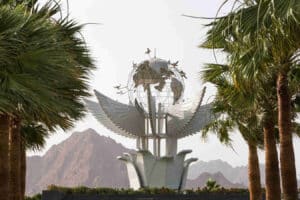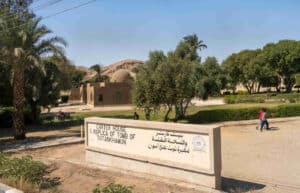For the curious travelers and those diving into the world of Egyptology, this is a must-ask question: Where is the Rosetta Stone? In this post, we explain it to you. And even though it sadly isn’t located in Egypt, understanding its history will be very interesting for your upcoming trip.
Why is it called that? Its history
The Rosetta Stone gets its name from where it was discovered: Rosetta, a city in the Nile Delta whose name in Arabic is Rashid. This discovery happened in 1799, during the context of the Napoleonic Wars and the Egyptian Campaign led by the French emperor Napoleon Bonaparte. Even though it was a full-blown invasion and led to numerous confiscations, many experts consider this period as the beginnings of modern Egyptology, due to the subsequent dissemination associated with that episode.
The Rosetta Stone was embedded in a military construction in this city and was found during some renovation works. However, its dating goes much further back: the 2nd century BC, and it likely belonged to a temple located in the nearby city of Sais, the former royal residence of the Ptolemaic dynasty.
Its significance lies in the fact that it has a single text inscribed in three different languages: hieroglyphic, demotic, and ancient Greek. This allowed Jean-François Champollion to decipher hieroglyphic writing in 1822, which is considered the pivotal moment for the true understanding of the ancient Egyptian civilization, which up until then was a complete mystery.
British Museum, the Home of the Rosetta Stone
However, despite being discovered in Rosetta by the French, the Rosetta Stone’s resting place is neither in Egypt nor France, but in the United Kingdom. It ended up there after the British emerged victorious from their conflict against their French adversaries. Consequently, this invaluable stele was brought to the British Museum, an institution that houses thousands of other works of art and archaeological pieces from the ancient world, originating from countries like Greece and Iran, to name a few.
It goes without saying that the room where the Rosetta Stone is displayed in the British Museum (room 4 of the Ancient Egypt area) is one of the most visited sections of the entire museum. The stone is showcased in a glass case dedicated exclusively to this artifact, positioned vertically so it can be admired from all angles, although in the past it was also displayed lying horizontally.
Calls for the Return of the Rosetta Stone
As is the case with the bust of Nefertiti (located in the Neues Museum in Berlin) and many other artworks and archaeological pieces from Ancient Egypt scattered around the world, the Egyptian government has called for their repatriation. This demand has intensified, especially considering the recent theft of artifacts from the British Museum, leading many experts to believe that this museum (self-proclaimed as the best custodian of these items) isn’t a secure location for such purposes. This claim was first made in 2003 by the renowned archaeologist Zahi Hawass, then head of Egypt’s Supreme Council of Antiquities.
While there’s no indication that a return will occur in the near future, those traveling to Egypt have the opportunity to behold a replica of the Rosetta Stone in the city where it was discovered, Rosetta. Indeed, it is a true hallmark and tourist attraction of this lesser-known destination, yet our agency can make it easily accessible to you.



